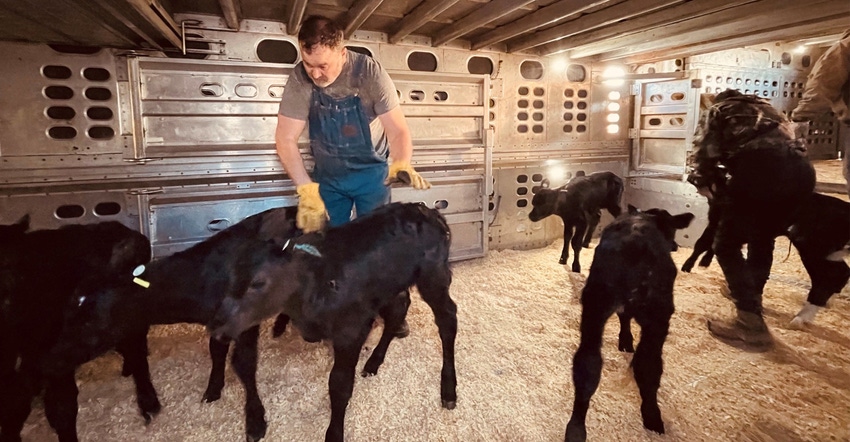October 25, 2022

Pre-weaned calves are more sensitive to transport stress than their adult counterparts due to their immature immune system, the incomplete development of their body’s stress response mechanism and their reduced ability to thermoregulate. Also, exposure to many everyday stimuli at a young age — such as handling, loading, weighing, regrouping with unfamiliar animals, reduced access to feed and water during transport, and fluctuating temperatures — provides another set of environmental stressors impacting a calf’s welfare.
According to the American Association of Bovine Practitioners (AABP), fitness for transport refers to “the calf’s ability to withstand transportation without compromising their welfare.” With limited research on the welfare impact of calves transported long distances, producers can make calves fit for transport by following a few best management practices to minimize stress and improve calf welfare during travels.
Preparing calves
Preparing calves for transport starts at the time of birth. A farm’s newborn calf processing practices should be followed regardless of whether the calf is a heifer or a bull, or if the calf will remain on the farm or be transported to another location.
Because calves are born with a naive immune system, providing an adequate amount of high-quality colostrum is critical to their health and is the single most important factor to prevent illness in young calves. In preparation for transport, AABP recommends calves receive adequate amounts of high-quality colostrum or an appropriate colostrum replacement at birth to introduce immunoglobulins into the calf to jump-start the immune system.
Calves should be properly identified by ear tag, with the information recorded. Secondary identification (second ear tag, photo, etc.) should also be used in the event an ear tag is lost.
Calves should receive all proper vaccinations and herd health management practices at processing, as agreed upon with the herd veterinarian as part of a veterinarian-client-patient relationship, or VCPR.
The navel should be properly dipped at birth, disinfecting it and allowing it to start the healing process. A properly healed navel will prevent pathogens from entering the calf’s bloodstream.
Prior to loading
Dairy Beef Quality Assurance guidelines recommend calves be a minimum of 3 days old at the time of transport. Calves should be bright, responsive and alert, and should be able to rise, stand and walk on their own prior to transport. They should have dry hair coats for insulation.
Calves should be healthy, and free of visible disease, disability and injury. Navels should be dry and withered. Before loading, check for nasal and eye discharge, droopy ears, dehydration, scours, or any condition that might make the calf less able to withstand the stresses of transport.
Calves should be well-fed before transport, providing the needed energy for transport. Liquid feed should be fed one to three hours before transport for energy. However, feeding less than an hour before transport may cause the formation of a casein clot in their abomasum from the stresses of loading and transport. Calves should also have access to fresh water for hydration and starter for additional energy prior to loading. For long hauls, electrolytes could be provided proactively before transport to minimize dehydration, but this will not replace the nutritional needs of the calf.
Kohlman is a regional University of Wisconsin Extension dairy educator in Fond du Lac, Sheboygan, Ozaukee and Washington counties.
You May Also Like




